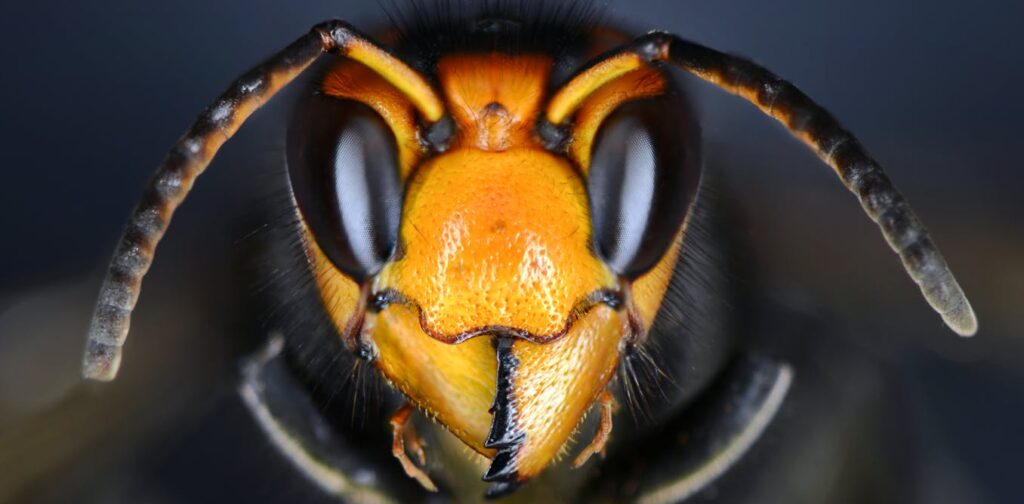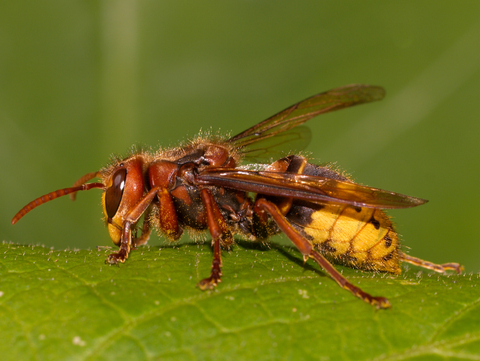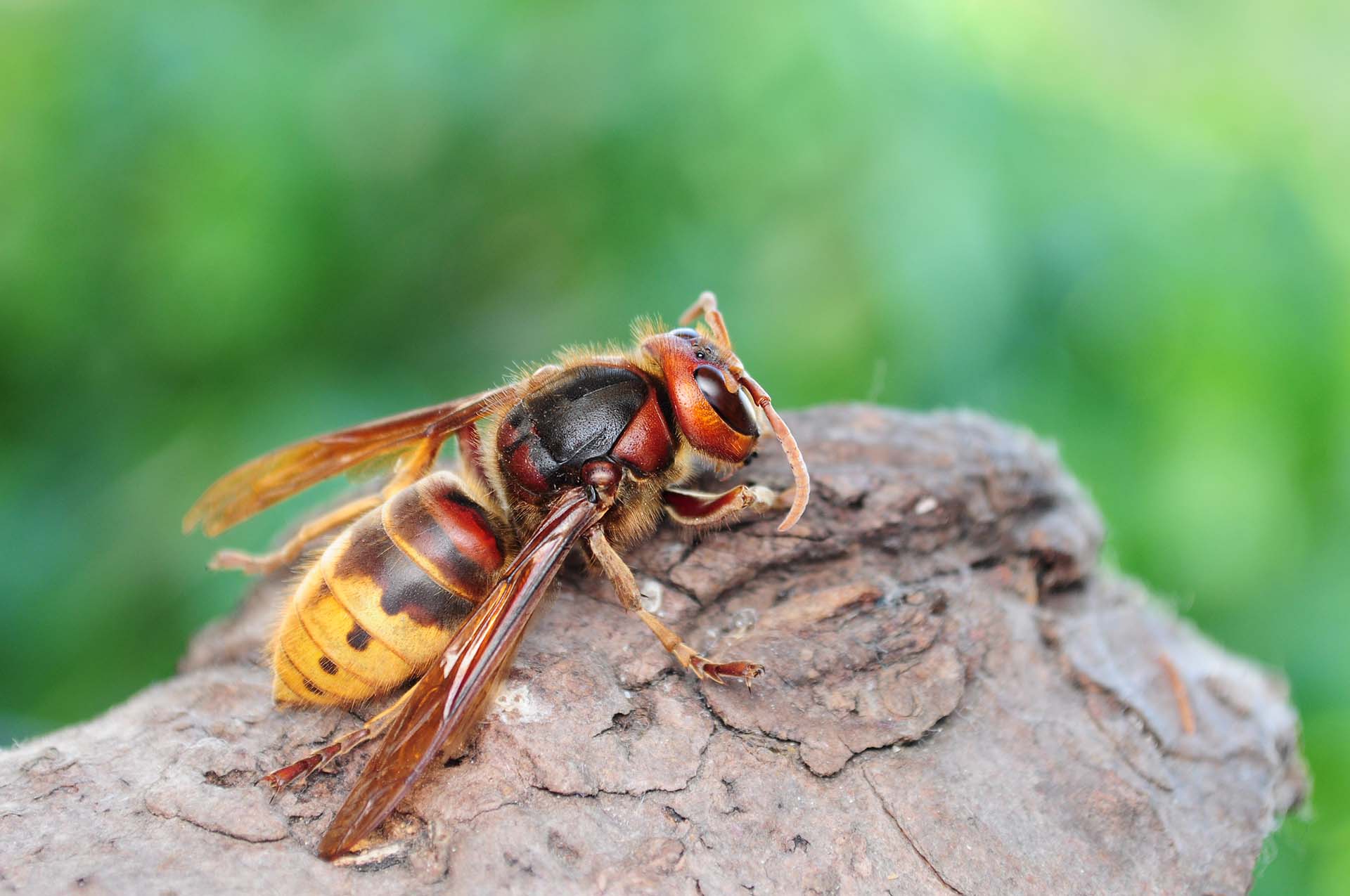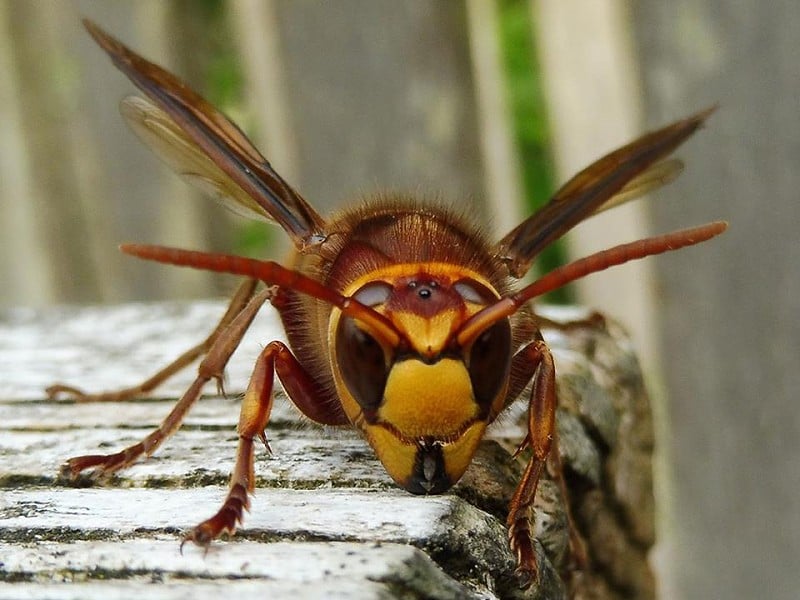
Having problems with hornets?
Hornets are the largest of the U.K. wasps and, like other social wasps, they build communal nests by chewing wood to make a papery pulp. Each nest has one queen, who lays eggs and is attended by workers. Most species construct exposed nests in trees and shrubs, but some build their nests underground or in other cavities. The nest dies over the winter, with lone queens hibernating in leaf litter or lofts until the spring.
Professional Hornet Control Services in the UK
Hornets are the UK’s largest social wasps. When a nest appears near homes, gardens or public spaces, the risk of painful stings and aggressive defence rises sharply. Shire Pest Solutions provides safe, professional nest treatments and removals—using industry-standard PPE and targeted insecticides—to protect people, pets and property.
Additional Information
Hornets build papery nests by chewing wood fibres. A single queen establishes the colony and lays eggs while workers expand the nest and forage. Most nests are exposed in trees or shrubs, though some are found in sheltered voids or underground cavities. Colonies die off in winter; new queens overwinter in lofts, sheds or leaf litter and start fresh nests in spring.
Hornet Control and Safe Nest Removal
Because hornets defend their colonies vigorously, any removal must be planned and carried out with care. Our technicians identify nest location and access routes, apply appropriate treatments, and remove or make safe the nest with minimal disturbance.
The Risks of Hornet Infestations
Hornets will aggressively defend a threatened nest. Their larger size means stings are typically more painful than those from common wasps or bees, creating a safety hazard for residents, visitors and pets—especially where nests are close to doors, play areas or walkways.
Preventing Hornet Nests
- Keep windows and doors closed in summer or fit fly screens.
- Cover outdoor bins to avoid attracting foraging hornets.
- Inspect trees, sheds, roof spaces and soffits regularly for early nest signs.
Safe Nest Removal – What Not to Do
- Do not disturb a nest unless it poses a genuine safety risk—hornets help control other insect pests and benefit wildlife.
- Do not attempt removal during daylight hours when hornets are most active.
- Do not burn or flood a nest—both are dangerous and ineffective.
Safe Nest Removal – What to Do
- Wear full protective clothing (beekeeping suit, gloves and face veil).
- Use a stable ladder and have another person secure it.
- Undertake removal after sunset when hornets are less active.
- Use long-handled tools to detach the nest and seal it in a heavy-duty bin bag.
Professional Hornet Control
Even with precautions, nest removal can be hazardous. Disturbance may cause swarming and multiple stings. Our trained technicians use specialist equipment, appropriate insecticides and safe working methods not available to the general public.
When to Seek Expert Help
Check for nests in early spring—small, newly established nests are simpler to deal with. If a nest is near your home, school or workplace and presents a risk, contact a professional. We ensure safe, effective treatment with minimal disruption.
If considering DIY treatments, consumer insecticides (sprays, liquids or dusts) may be used directly on accessible nests; the safest time is autumn or winter when activity is low. At other times of year, professional assistance is strongly recommended.
Do Hornets Carry Diseases?
Hornets are not typical vectors of human disease, but they can spread bacteria indirectly by contaminating food or surfaces after visiting bins or carcasses. Their stings also present medical risks.
Potential Health Risks
- Bacterial contamination: Movement between refuse and food areas can transfer pathogens such as E. coli and Salmonella, increasing the risk of food poisoning.
- Venom allergies and anaphylaxis: Most stings cause local pain and swelling, but some people may suffer severe, potentially life-threatening reactions needing immediate medical care.
- Secondary infections: Sting sites can become infected (e.g., by Staphylococcus aureus) if not cleaned and monitored properly.
Where Hornets Nest
- Hollow trees
- Roof spaces and attics
- Wall cavities
- Sheds and outbuildings
- Dense bushes and hedgerows
Hornets are generally less aggressive than common wasps unless their nest is threatened; however, their size and potent venom make them a more dangerous pest when provoked.
Managing a Hornet Infestation
Because hornets defend nests forcefully and stings can be serious, professional removal is the safest option. If you suspect a hornet nest on your property, contact a qualified pest controller to assess and resolve the problem safely.
Hornet Control FAQ
More About Shire Pest Solutions
Shire Pest Solutions is a trusted and local pest control company proudly serving homes and businesses across Oxfordshire and beyond. We have built our reputation on professionalism, reliability, and fast response times, specialising in the safe and effective removal of pests including ants, wasps, rodents, bed bugs, and more.
Based locally, we regularly assist customers in Didcot, Wallingford, Abingdon, Wantage, Witney, Newbury, Thame, Thatcham, and Stokenchurch. Our knowledge of the local area enables us to provide rapid call-outs and treatments that are suited to the unique pest challenges of each location.
At Shire Pest Solutions, we don’t just eliminate pests—we stop them from returning. We offer transparent pricing with no hidden fees, and we dedicate ourselves to customer satisfaction, making us the go-to pest control provider for homeowners, landlords, and commercial clients alike.
Contact us today to arrange a call-out or find out more about our pest control services across Oxfordshire and surrounding areas.



